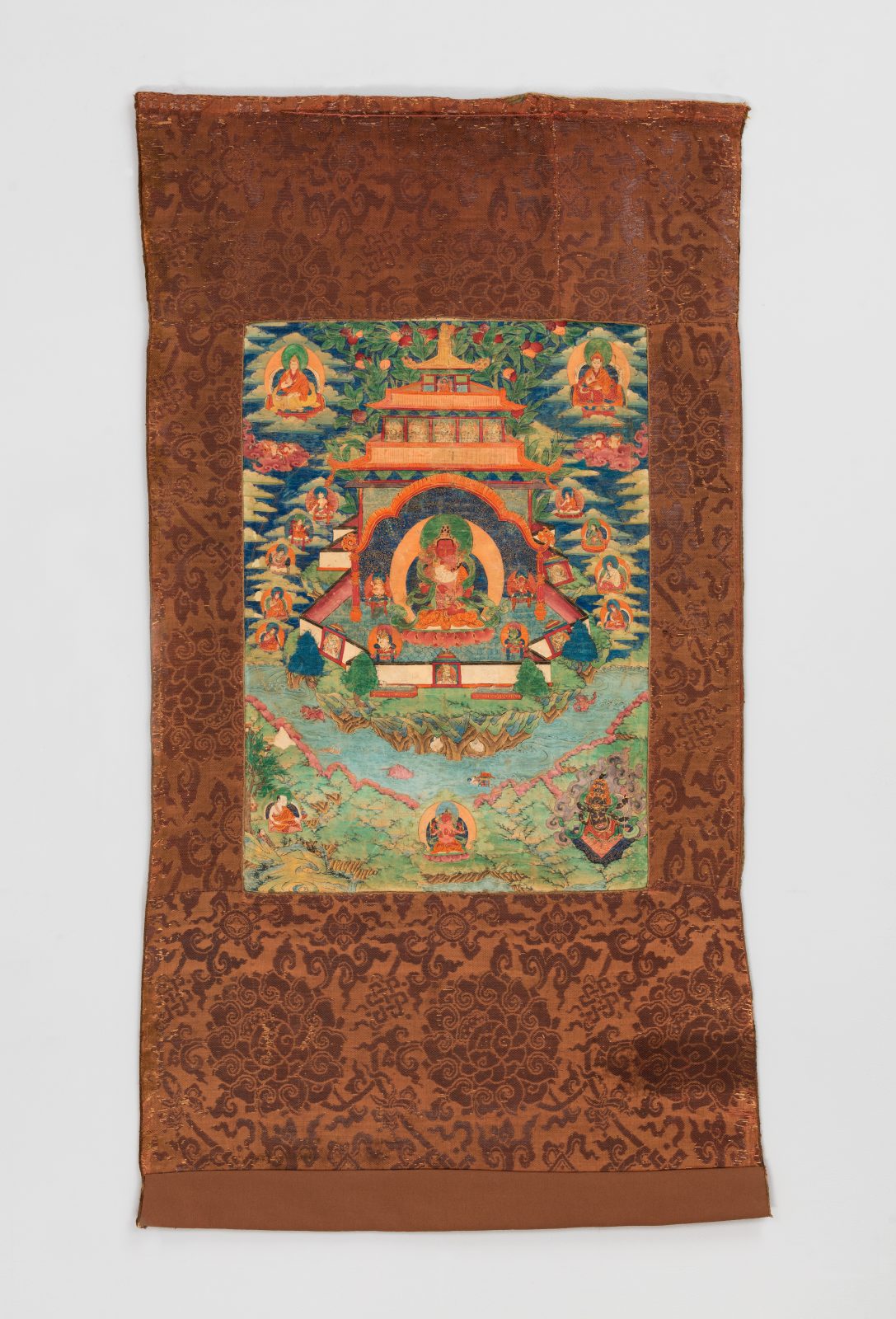

This week’s meditation session is led by Lavina Shamdasani and the theme is Reimagine. The guided meditation begins at 12:57.

Red Avalokiteshvara; Tibet; 19th century; Pigments on cloth; Rubin Museum of Himalayan Art, Gift of Shelley and Donald Rubin; C2006.66.549
This intricate thangka, or Tibetan scroll painting, depicts Avalokiteshvara, the bodhisattva of compassion, who has vowed to remain in the cycle of rebirth throughout time to work for the benefit of all beings.
Avalokiteshvara is known to be the patron deity of Tibet. Avalokiteshvara appears in many forms, including peaceful and wrathful, with four or six arms, 1,000 hands and eyes, and 11 heads. Here is Avalokiteshvara in his simplest form, in a state of divine union with the goddess Tara, his female counterpart.
Bodhisattvas display determination and self-sacrifice, vowing not to pass into the blissful state of nirvana until all sentient beings are liberated. Practitioners develop this aspiration, or “mind of awakening,” also known as bodhicitta. They recite mantras and visualize Avalokiteshvara, aspiring to make their body, speech, and mind indistinguishable from his. Depictions of Avalokiteshvara in ritual texts and paintings help practitioners to attain this state of mind.

Lavina Shamdasani is a certified compassion teacher through the Compassion Institute and Stanford University. She has taught programs focused on mindfulness, compassion, joy, and gratitude and led book club discussions and meditations for over five years.
Lavina studied positive psychology coaching at the Wholebeing Institute and helps clients transform their lives and meet their personal and professional goals.
Get the latest news and stories from the Rubin, plus occasional information on how to support our work.